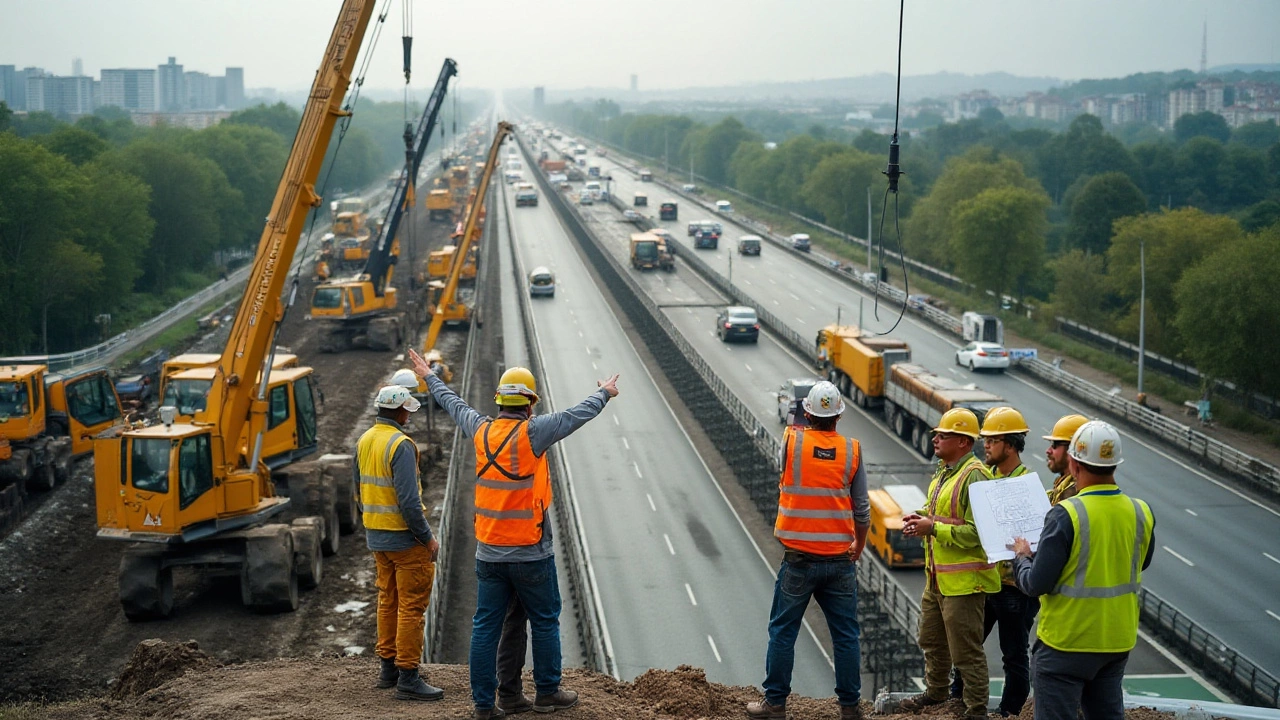Heavy Civil Construction Explained in Plain English
If you’ve ever driven over a highway, crossed a bridge, or turned on a tap at home, you’ve benefited from heavy civil construction. It’s the backbone of every town – the roads, bridges, tunnels, water lines, and foundations that keep life moving.
What Counts as Heavy Civil Construction?
Think big, think permanent. Heavy civil projects are usually:
- Roads and highways that connect cities
- Bridges and overpasses that span rivers or railways
- Tunnels for cars, trains or utilities
- Water, sewage and storm‑drain networks
- Foundations for large buildings, factories or power plants
These jobs need big machines, lots of concrete, and crews that understand how soil, steel and water interact.
Why It’s a Game‑Changer for Communities
When a new road opens, traffic jams shrink and local businesses see more customers. A well‑built bridge can cut travel time by miles. Upgraded water pipelines mean fewer burst pipes and cleaner water for homes.
But the benefits go beyond convenience. Properly designed civil works protect against floods, reduce carbon emissions by easing traffic, and create jobs that pay well.
For investors, heavy civil projects are low‑risk, long‑term assets. Governments rely on them to meet safety standards and boost economic growth.
So, whether you’re a homeowner curious why your street needs repaving or a developer planning a new industrial park, understanding heavy civil construction matters.
Now, how does a company like McNeil Plumbing & Construction Services fit in? We combine plumbing know‑how with full‑scale construction expertise. Our team can lay water mains, install drainage systems, and even manage the concrete work for foundations.
We start every project with a site survey. That means checking soil conditions, existing utilities and local regulations before any digging begins. Skipping this step is a common cause of delays and extra costs.
Next comes the design phase. Our engineers use simple software tools to map out pipe routes, calculate load‑bearing capacities, and plan drainage slopes. The goal is a design that’s easy to build and cheap to maintain.
During construction, we bring in the right machines – excavators for digging, pavers for road surfaces, and cranes for steel bridge sections. Our crew follows a strict safety checklist, so everyone goes home safe and the project stays on schedule.
Finally, we hand over a detailed maintenance manual. It tells you when to inspect a culvert, how to test water pressure, and what signs mean a repair is due. That paperwork saves headaches years down the line.
If you’re facing a heavy civil project, start with a clear question: What problem am I trying to solve? Then reach out to a trusted contractor who can combine plumbing, civil, and construction skills under one roof.
Heavy civil construction isn’t just about concrete and steel – it’s about keeping communities running smoothly. With the right partner, you get a project that finishes on time, stays within budget, and lasts for decades.

